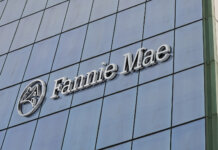I didn't get a chance to see the television news documentary ‘Breaking the Bank’ when it was first broadcast on the PBS series ‘Frontline’ in June. However, I just received a DVD copy, which is now being released.
The timing of the DVD is serendipitous, considering that we are approaching the first anniversary of the federal bailout of the financial services industry. However, ‘Breaking the Bank’ takes a dangerous step in rewriting the history of the events that led up to this catastrophe. If we are to believe this production, we can blame our current mess solely on former Treasury Secretary Henry Paulson.
Part of the problem with ‘Breaking the Bank’ comes in beginning the story in midstream, with the collapse of Lehman Brothers due to a glut of toxic mortgages in its portfolio. The film informs us that in September 2008, ‘The housing bubble had burst. The markets were teetering.’ However, the documentary does not explain how all of those toxic mortgages got into the Lehman Brothers portfolio.
The housing bubble, the meteoric rise and fall of subprime and Alt-A loan products and the August 2008 closing of Lehman's BNC Mortgage subsidiary aren't mentioned in the documentary. If we are to believe the film, Lehman Brothers woke up one day and found itself dying. In the midst of this crisis, according to the film, is Paulson, who is repeatedly identified as being a longtime Wall Street figure and the former chairman and CEO of Goldman Sachs.
One gets the impression from the film's tone that having a Wall Street background is incompatible with being in government – though ‘Breaking the Bank’ doesn't care to mention that Paulson's predecessor at the helm of Goldman Sachs, Jon Corzine, also left Wall Street for a political career (first as senator and then as governor of New Jersey).
The film describes Paulson as being initially opposed to any notion of a government bailout, only to do an abrupt about-face and start pushing for bailout funds. Yes, that is correct. But what is not mentioned is that Paulson wasn't the only player in the midst of the madness. In fact, he was the only one who stepped forward when no one else was willing to exert leadership.
While watching this recasting of recent history, I found myself talking back to the screen. ‘What about Ben Bernanke?’ I said, referring to the Fed chairman who co-engineered the bailout scheme – the film only shows him in a fleeting news clip, following Paulson into a meeting.
I then yelled out, ‘Where were the regulators?’ You wouldn't know there was a Federal Deposit Insurance Corp., a Securities and Exchange Commission or any regulatory agency if you watch ‘Breaking the Bank.’ ‘What about Congress?’ I continued yelling. Well, the congressional leaders turned up later in the documentary, with Sen. Chris Dodd, D-Conn., claiming to be in the dark about the severity of the crisis. But that was no surprise, since Dodd was absent from Capitol Hill in his quixotic pursuit of the presidency.
‘And what about George W. Bush?’ I demanded. ‘Breaking the Bank’ didn't seem to consider the strangeness of having the Treasury Secretary running the country instead of the president.
The collapse of the financial services industry did not take place overnight, as ‘Breaking the Bank’ insinuates. It was a long time brewing, with too many individuals exercising atrocious judgment at every level of the financial food chain – from the brokers and appraisers who were fudging the facts on basic home-loan paperwork all the way up to an Oval Office occupant who kept stubbornly insisting that the economy was sound and secure.
The absence of the chaos that preceded the Lehman Brothers fiasco is a too-convenient erasure of the early history of the crisis. Much of the film is devoted to Paulson's alleged bullying of Bank of America to accept a hasty acquisition of Merrill Lynch without performing proper due diligence. Of course, nobody needs to strong-arm Bank of America into pursuing shaky transactions – also missing from ‘Breaking the Bank’ is the 2008 takeover of Countrywide Financial by Bank of America.
Paulson was not interviewed for ‘Breaking the Bank’ and he was mostly featured on camera in unflattering black-and-white still photographs that show him in various degrees of scowling. You get the idea what the documentary's creators think of him. I would like to believe that ‘Breaking the Bank’ is just an isolated case of crummy documentary filmmaking that tries to shrink a complex story into an hour by hacking away the thornier edges of the tale.
Also, this is not the only quickie history of recent events – a number of newly published books are already in stores.
If the story of what went down is written, it has to be an honest overview. After all, we cannot avoid making past mistakes in the future if we don't get the correct story of those mistakes today.
What is your view? Feel free to e-mail me or leave your comments on this page – I am interested in hearing what the members of the industry think about this.
– Phil Hall, editor, [b][i]Secondary Marketing Executive[/i][/b].
[i] (Please address all comments regarding this opinion column to hallp@sme-online.com.)[/i]













